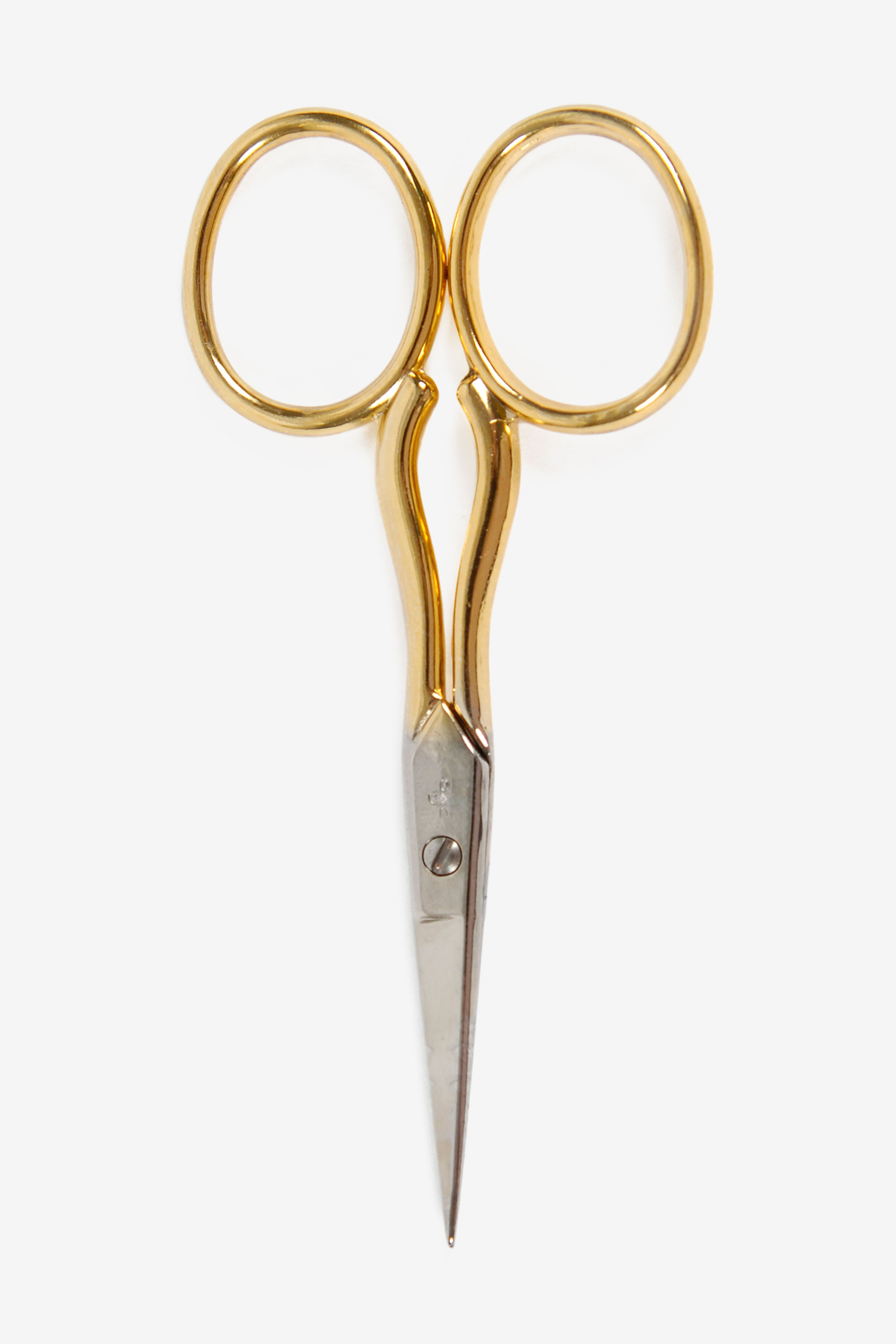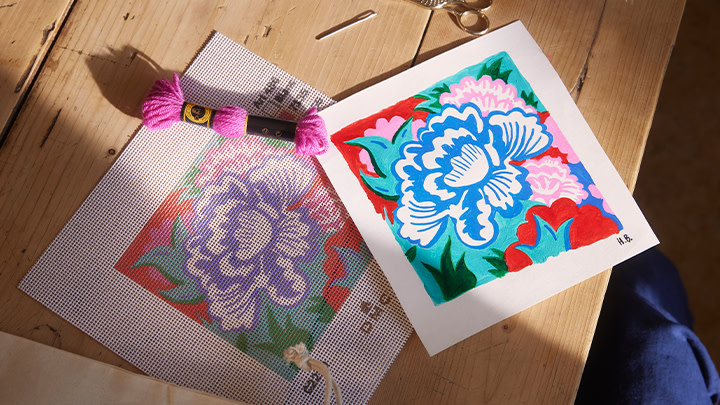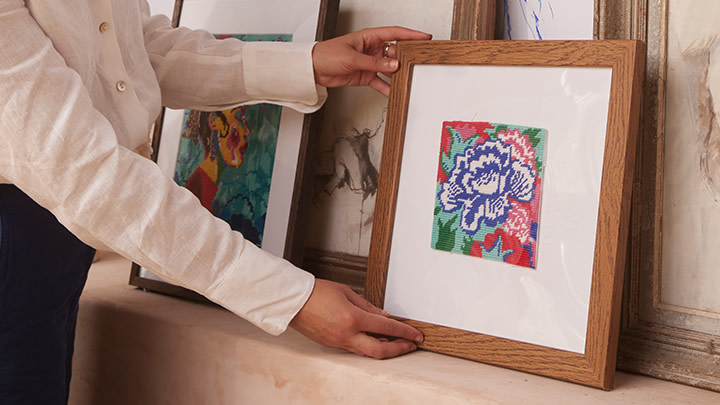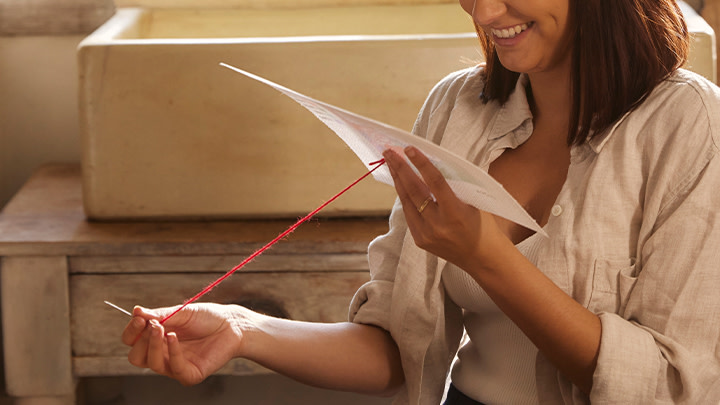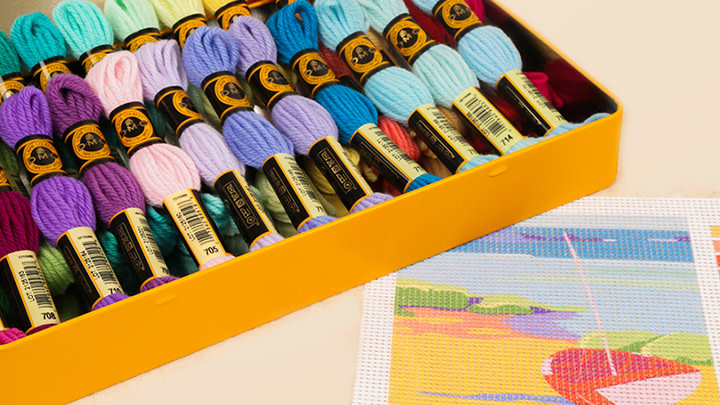If you are new to tapestry and needlepoint you might be wondering if Tapestry Wool or Soft Cotton is better for your project? In this article we’ll explain the differences to help you choose what’s right for your next project.
What is Tapestry Wool?
DMC Tapestry Wool (also known as Colbert Wool) is the traditional choice for tapestry and needlepoint especially in the US and UK. It is a gently twisted 4-ply thread made from 100% soft, virgin wool that is combed to create a very soft thread. Tapestry wool offers excellent canvas coverage and an even texture. Because it is 100% wool, it is very hard wearing and naturally fire and stain resistant. It’s an excellent choice for homewares that need to be resilient. The reason tapestry cushions last so long is because they are stitched in wool.

What Wool Is Best for Tapestry?
DMC Tapestry Wool is the best wool for tapestry, it is available in 390 sumptuous colors so there’s lots of scope for creating subtle shaded designs and colorful creations. Because of wool’s natural luster, the colors of tapestry wool are brighter and more vibrant than soft cotton, which is revered for its more muted matte finish. DMC Tapestry wool is colorfast which means the colors won’t run if it gets wet and it is given a treatment which makes it moth-proof. Nobody wants their hours of stitching eaten by pests! Our tapestry wool undergoes rigorous checks to ensure color consistency so you can be confident when you buy a specific color it will always be the same precise shade. Wool is very versatile, it is great for adding texture and thicker stitches to a project. It is created with strong fibers that keep its shape and firmness.
Is Tapestry Wool Different to Knitting Wool?
Tapestry wool looks a lot like double knit or worsted weight knitting yarn but it is made exclusively for stitching tapestry and needlepoint. The wool is designed to be repeatedly drawn through the canvas as you stitch. If you try to substitute knitting yarn it is likely to stretch and fray as you stitch and you won’t get such a good end result.
What is Soft Cotton?
DMC Soft Cotton (also known as Retors Mat) is a more modern choice for tapestry and needlepoint. It is very popular in continental Europe. It is a 5-ply, 100% cotton thread that is smooth with a distinctive matte finish. This gives the colors a more muted appearance when compared to tapestry wool which some stitchers prefer. It is available in a diverse palette of 285 colors. The thread is made from long fiber cotton which makes it soft, strong and supple. During the manufacturing process, the cotton fibers are combed and rapidly passed through a flame to remove fluff and make it completely smooth. DMC Soft Cotton is twisted, dyed and made into skeins in our factory in Mulhouse France where we have been making thread since the 1800s. To maintain the matte finish of this thread we do not mercerize it, but it still undergoes the same uncompromising color checks as all our other threads to ensure the color consistency DMC is renowned for.

Can You Use Cotton for Tapestry and Needlepoint?
Cotton threads are good-value, sturdy and don't pill. They can feel more rigid to stitch with as they don’t have as much stretch as tapestry wool. It is a matter of personal preference which you prefer to use. Its matte appearance makes it a brilliant choice for decorative pieces that are going to be framed. It is slightly finer than DMC Tapestry Wool and it covers the canvas well.
Which Is Better for Tapestry and Needlepoint Cotton or Wool?
DMC Tapestry Wool and DMC Soft Cotton are both high quality threads that are strong and durable. The one you choose will largely depend on how you intend to use your finished needlework but also which thread you prefer the feel of as you stitch.

The image above shows a direct comparison. The right hand side of the image is stitched in DMC Soft Cotton and the left in DMC Tapestry Wool. The difference once stitched is subtle. You might want to try buying a skein of each and doing a test piece to decide which you prefer.

